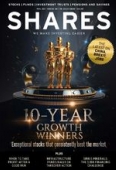Archived article
Please note that tax, investment, pension and ISA rules can change and the information and any views contained in this article may now be inaccurate.
Should you stick with your auto-enrolment default fund?

Keeping track of your financial affairs is no easy task. Many savers will have their money scattered about in various different products, from ISAs to SIPPs and perhaps a Lifetime ISA or Help to Buy ISA too.
Those looking to the future could even have a Junior ISA or SIPP set up for their children or grandchildren. And that’s alongside the management of day-to-day finances like bills and mortgage repayments.
As such, it should probably come as no surprise that many savers have absolutely no idea where their pension is invested.
In fact, according to a recent survey a third of people who have recently entered drawdown don’t know where their hard-earned fund is.
Given this is exactly the point individuals should be engaging with their pension, it’s likely far fewer people take any notice of their investments when they are building up a retirement nest egg – often referred to as the ‘accumulation’ phase.
As automatic enrolment is built on apathy – with savers put into a pension scheme by their employer unless they choose to opt-out – you would expect even more people not to bother checking where their money is going or how the fund in which they’re invested is performing.
However, savers who stick their head in the sand risk missing out and could end up losing out in retirement.
RETIREMENT LOTTERY
A report by Corporate Adviser Intelligence, an adviser publication, analyses the performance of almost 50 auto-enrolment ‘default’ funds. These are the investment funds into which you are automatically placed if you make no active decision about how your workplace pension pot is invested.
Because these funds need to cater for all manner of employees of different ages, earning varying salaries and with different appetites for risk, they are by nature a compromise unlikely to fit with your specific retirement goals.
Furthermore, the workplace pension scheme you get for auto-enrolment is chosen by your employer rather than you. And on top of that, each scheme takes a different approach to investing in its default fund with different charges and different outcomes at retirement.
As a result, those who do nothing leave themselves exposed to a retirement lottery based on the performance of a scheme they have never actually chosen.
HOW DID THE DEFAULT FUNDS PERFORM?
The variation in outcomes uncovered by the Corporate Adviser Intelligence research is stark.
The average default fund delivered an annualised return of 8.5% during the ‘growth phase’ – that is when an investor is a long way from drawing an income from their pension and so generally more able to absorb investment risk.
Investors five years from state retirement age saw average annualised returns of 7.24%. The fact this figure is lower is unsurprising given default funds usually swap equity exposure for lower risk investments and cash to reduce volatility as people reach a point where they are more likely to start taking an income from their pot.
It should be noted that the analysis does not account for charges due to the wide variation among schemes. While there is a charge cap of 0.75% in place, different defaults comply with this in different ways.
NEST, the pension scheme set up by the Government, levies a 0.3% annual management charge (AMC) alongside a 1.8% charge on each contribution you pay, for example.
Now: Pensions, on the other hand, charges a 0.3% AMC and a £1.50 monthly ‘administration’ fee. Other schemes cover all costs through a single percentage charge.
DIGGING DEEPER INTO THE NUMBERS
While the average returns might sound acceptable – and have clearly benefited from the post-crisis market bull run – they mask a large variation in performance.
There is a 30% variation between the best and worst performers over a five year period, according to the research.
Asset allocation also varies widely, with equity exposure in the growth phase ranging from 37% to 100%.
LESSONS FOR RETIREMENT INVESTORS
The performance of default funds should be of interest to anyone in employment. But it’s clear from this research that the outcome you get if you don’t make an active choice could vary wildly depending on the approach of the scheme your employer has picked.
Unfortunately most employers will only give you the choice of a single pension scheme, and you can’t direct your matched employer contribution through auto-enrolment to a pension of your choosing.
However, the scheme your employer chooses will usually give you the chance to move away from the default if you aren’t happy with the way your money is being invested.
You should also remember that while auto-enrolment represents a good start, it’s likely you’ll need to save over and above the 8% minimum total contribution level that will be in place by April next year.
Any savings you make above this level can go into a scheme of your choosing – including a SIPP – meaning you’ll be able to choose from a wider choice of investments.
Tom Selby, senior analyst, AJ Bell
Important information:
These articles are provided by Shares magazine which is published by AJ Bell Media, a part of AJ Bell. Shares is not written by AJ Bell.
Shares is provided for your general information and use and is not a personal recommendation to invest. It is not intended to be relied upon by you in making or not making any investment decisions. The investments referred to in these articles will not be suitable for all investors. If in doubt please seek appropriate independent financial advice.
Investors acting on the information in these articles do so at their own risk and AJ Bell Media and its staff do not accept liability for losses suffered by investors as a result of their investment decisions.

 magazine
magazine









